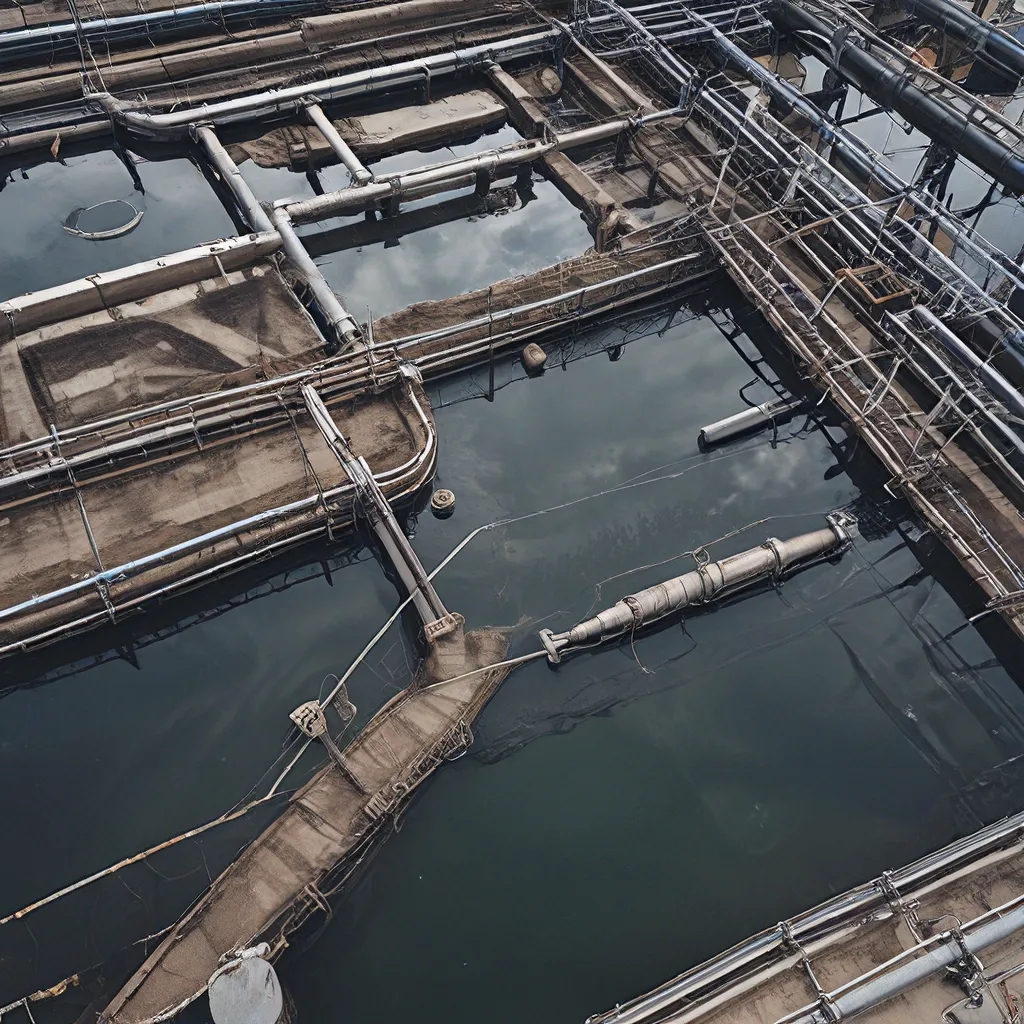
As someone deeply invested in the world of wastewater treatment, I’ve witnessed firsthand the transformative power of digital technologies. It’s no secret that the industry is facing a myriad of challenges, from climate change and budget constraints to soaring energy and chemical prices. But what if I told you that the solution lies in the very technology that’s disrupting our everyday lives?
Welcome to the era of predictive analytics and digital optimization in wastewater treatment. Buckle up, because I’m about to take you on a journey that will revolutionize the way you think about managing your water facilities.
The Rise of the Digital Twin
Let’s start with the concept of the digital twin. Imagine having a virtual replica of your wastewater treatment plant, one that can simulate and optimize its performance in real-time. This is the power of the plant module in Hubgrade Performance, a digital solution that’s already transforming operations at over 100 wastewater treatment plants worldwide.
By using advanced algorithms and real-time data, this digital twin can provide continuously optimized setpoints to the PLC control, delivering crucial insights to operators, process engineers, and management teams. The results? Up to 20% reduction in energy consumption, 15% reduction in chemical usage, and 10% improvement in treated water quality. Now, that’s what I call a game-changer!
But the digital transformation doesn’t stop there. ProcessMiner’s advanced water treatment solutions take things to the next level, using AI and intelligent sensors to optimize the sludge dewatering process. By continuously monitoring and autonomously adjusting polymer dosage, they’re able to produce a consistently drier sludge cake, reducing the costs of transportation, incineration, and disposal.
Imagine the impact this can have on your bottom line. Each 1% reduction in sludge cake moisture can save up to $100,000 annually. And with the platform’s ability to handle variations in water quality, you can rest assured that your wastewater treatment processes will remain efficient and cost-effective, no matter what challenges come your way.
Predictive Maintenance for Membrane Plants
But the digital revolution doesn’t stop there. When it comes to membrane plants, there’s a new tool in town that’s combining membrane process expertise with artificial intelligence: the Smart Membranes solution.
Imagine being able to predict and manage membrane fouling before it becomes irreversible. This cloud-based tool provides real-time and reliable assessments of the fouling state of the membranes, enabling proactive and evidence-based decision-making for the operational team.
No more unplanned shutdowns, no more guesswork. With Smart Membranes, you can optimize maintenance schedules, avoid costly disruptions, and keep your membrane plant running at peak efficiency. It’s like having a crystal ball for your water facility – but one that’s powered by cutting-edge technology, not magic.
Tackling Sewer Overflow Challenges
But the digital transformation in wastewater treatment doesn’t stop at the plant’s doorstep. Hubgrade Performance also has a solution for the growing challenge of sewer overflow management.
As our cities continue to expand and climate change exerts its influence, the pressure on aging sewer systems is mounting. Hubgrade Performance collects and analyzes data from your sewers, using advanced and predictive analytics to improve monitoring and reduce discharges into the environment.
By leveraging real-time optimization and minimal investment, sewer operators can reduce up to 40% of overflows. That’s a staggering statistic, one that could have a significant impact on the health of our waterways and the communities that depend on them.
Cybersecurity: The Unsung Hero
But let’s not forget the elephant in the room: cybersecurity. In an age of ever-evolving digital threats, the critical nature of water facilities has never been more apparent. That’s why the team behind Hubgrade has designed their solutions with the highest level of end-to-end cybersecurity, ensuring that your business is fully resilient against the emerging dangers of cyberattacks.
It’s a sobering thought, but one that can’t be ignored. As we embrace the digital transformation in wastewater treatment, we must also be vigilant in protecting our assets from the growing threat of cybercrime. Kudos to the Hubgrade team for taking this crucial aspect of digital solutions seriously.
The Future of Wastewater Treatment
So, where do we go from here? The future of wastewater treatment is undoubtedly digital, with predictive analytics and optimization at its core. But it’s not just about the technology – it’s about the human element as well.
As Hubgrade’s approach demonstrates, it’s the combination of digital tools and the expertise of dedicated employees that truly unlocks the power of these solutions. After all, the best technology in the world is worthless without the right people to interpret the data and make informed decisions.
That’s why I’m so excited about the future of wastewater treatment. As we continue to push the boundaries of what’s possible, I can’t wait to see how the industry will evolve, how new technologies will emerge, and how the dedicated professionals in this field will rise to the challenge.
Because at the end of the day, it’s not just about saving money or improving efficiency – it’s about safeguarding our most precious resource: water. And with the digital transformation firmly in our grasp, I believe we’re well on our way to a more sustainable, resilient, and future-proof wastewater treatment landscape.
So, who’s ready to dive in and be a part of this exciting journey? I know I am. Let’s get to work and show the world what we can do!